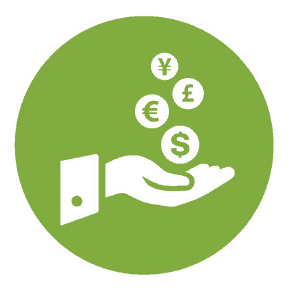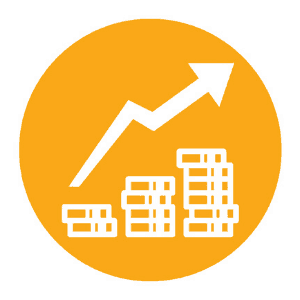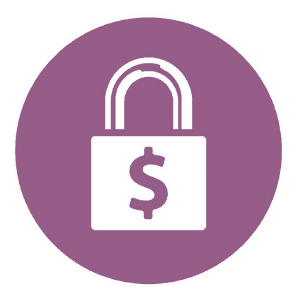Frequently Asked Questions
When should you consider a personal loan?
Personal loans can be a great tool when you have an expense or debt you can’t immediately afford to pay or repay. They should be considered when you have an immediate need and can pay the loan off in a timely fashion. For smaller purchases or payments that aren’t urgent, personal loans aren’t always the best option. However, if you need to finance a larger purchase, personal loans are often a good or even necessary tool.
What are the best places to get a personal loan?
The best personal loans can be found in banks, credit unions, alternative or online lenders or even with private lenders. Smarter Loans works with Canada’s most reputable loan companies that carry a variety of products with flexible rates and terms and help you borrow the money you require.
What are the current average personal loan rates?
The average personal loan rates available to you right now will depend on your credit score. At the moment, if your credit score is very high, interest rates often start as low as 6%. If your credit score is really low, you may be faced with interest rates at 35% or even higher.
How do I qualify for a personal loan?
To qualify for a personal loan with a credit score that is reasonable, you will typically need: Proof of residency in Canada, credit history, steady income from employment and government issued ID. Small loans ($100 – $1,000) are typically easier to qualify for than larger loans.
If your credit score and/or other financials are less attractive to lenders than borrowers, you may be asked for collateral or personal loans guarantee to borrow (you can learn more about guarantor loans here).
How can I get a personal loan online?
Below you will find a list of online personal loan providers that can get you approved in minutes, and funds deposited in your bank account in as little as 24 hours. These lenders have been carefully verified and selected by Smarter Loans and are some of the most reputable financial companies in Canada.
How much is a $10,000 loan over 5 years?
The cost and monthly payment of a $10,000 loan over 5 years depends on the lender, financing options, the interest rate and any additional fees imposed by the lender. Utilizing a loan calculator can provide borrowers a clear picture of the financing options of the lender, total cost and monthly payments based on the interest rate.
Is 15% on a personal loan bad?
A fixed 15% interest rate on a personal loan is relatively high compared to average rates, for loans which often range from 6% to 36%. Your credit score, income, and other financial factors can influence the fixed or variable interest rate that lenders make you receive.
Is 7% high for a personal loan?
A lender who can offer loans at 7% interest rate on personal loans is considered moderate. However, whether it’s high or low for you depends on how much interest and on your credit score and other personal circumstances vary. The frequency in which you make contributions, whether you choose to make payments on a monthly or bi-weekly basis, could impact the interest accumulation you pay over the term of the loan. Additionally, opting to make a lump sum contribution at any point during the term could alter the interest amount significantly. It’s also worth noting that your credit standing can influence not only the interest rate but also the available contribution options from lenders. By taking the time to calculate the different scenarios and understand the implications of varying interest rates, payment schedules, and lump sum payments, you can better navigate the borrowing process and make credit decisions that align with your personal situation.
What is the current interest rate for personal loans in Canada?
Interest rates you pay to borrow or for personal loans in Canada can vary widely, typically ranging between 3% and 46.96%. The exact rate or higher interest rates you’ll pay to borrow money from or receive depends on several factors including your credit score and situation. Your payment schedule and frequency, whether making monthly or bi-weekly payments, can also influence the interest accrual on the principal amount. Furthermore, making a lump sum payment could potentially lower the interest accrued over the term of the credit. Additionally, your ability to negotiate terms with lenders could also influence the interest rate applied. Therefore, it’s essential to thoroughly review and calculate the implications of different interest rates and payment choices, ensuring a well-informed credit decision and a manageable repayment plan.
How much are payments on a $50,000 personal loan?
The monthly payment on loans of $50,000 will vary based on the lender, interest rate, and the duration of the borrower’s term and lender’s loan term. For instance, at an interest rate of 10%, the monthly payments would be approximately $1,060.66 over a 5-year term. Utilizing a loan calculation can help elucidate how different payment frequencies, like monthly or bi-weekly payments, affect the timeline to full repayment. Moreover, should a borrower choose to contribute a lump sum payment, the calculator can recalculate the new monthly payments, showing a reduction in the number of payments or a decrease in the annual percentage rate on the monthly payment amount. By doing calculations and examining different scenarios, borrowers can better comprehend the various options available, which is vital for managing credit effectively and making well-informed borrowing decisions and not mounting up to much debt.
What is the average payment on a $30,000 personal loan?
The average monthly payment amount on loans of $30,000 is contingent on the interest rate and the loan term. Employing a loan calculator can help borrowers with payment options and ascertain the monthly payments and total of the loan. By inputting various scenarios into the calculator, borrowers can explore how changing the payment frequency, such as from monthly to bi-weekly, affects the regular loan payments and the loans lifespan. Additionally, if a borrower opts to make a lump sum payment, the calculator can provide a new set of monthly payments and showcase the reduced cost of credit. Through this tool, borrowers can calculate different payment options and scenarios which in turn, aids in understanding the commitment involved, assisting in making well-informed credit decisions.
Can you get a $100,000 line of credit?
Yes, it’s possible to obtain a $100,000 line of credit, depending on your creditworthiness, income, and the lender or bank’s policies. It’s advisable to discuss your needs and financial situation with your lender, bank, or potential lenders to understand the lender and full credit terms and eligibility. In your discussion, it might be pertinent to inquire about the payment frequency, whether there are options for making regular payments towards reducing the principal amount, or if there’s flexibility to pay a lump sum without incurring penalties. These factors can impact the full sum of credit. Additionally, understanding how to calculate the variable interest rate and the impact of different payment frequencies on your credit can provide a clearer picture of your debt commitment. Having a good grasp of these aspects can also contribute to better credit management and potentially more favourable terms from lenders.
How much do you have to pay monthly on a line of credit?
The monthly payment on a line of credit varies, as it’s influenced by the outstanding principal or balance, the interest rate you pay or borrow money at, and other costs and the lender’s terms. Usually, you’ll need to pay the principal and pay at least the accrued interest monthly, though paying down the principal is recommended to reduce the total cost.
A line of credit can serve as a flexible financial tool, especially in scenarios where you have ongoing expenses or where the total cost of a project is uncertain. For instance, if you’re renovating your home or planning to buy a car, a line of credit might be a prudent choice. Unlike traditional loans, a line of credit allows you to draw funds up to a certain limit as and when you need, and interest is charged only on the fixed amount of money you actually borrow.












